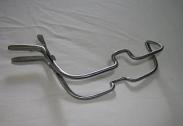Off-Label Use of Medical Devices
 When a patient comes into a physician's office, the patient is looking for the best, most modern care they can get. And a physician certainly wants the same thing.
When a patient comes into a physician's office, the patient is looking for the best, most modern care they can get. And a physician certainly wants the same thing.
This search for the best possible treatment presents a dilemma, however. When might the best treatment also be a treatment that is still in the process of being developed? When might a physician's search for the most advanced treatment cross over into medical research, and where does FDA draw the line between the two. The answer is clear in some cases, but not so clear in others.
First let's define what we mean by medical research. Research in the laboratory and on animals is usually called preclinical research. When a medical device has been successful in preclinical research the sponsor for a new medical device may apply to FDA for an Investigational Device Exemption (IDE) which, if approved, would allow for clinical research - research involving human subjects - to prove that the device is safe and effective on people.
When, and if, a device is approved by FDA, it is always approved for a particular set of indications for use. FDA does not approve a device for just any use.
If the physician is using a medical device strictly for the practice of medicine, then FDA does not get involved, even if the physician is using the device for a different purpose than it was originally approved by FDA. That is a decision between the doctor and the patient. If, on the other hand the physician's intent is to expand the indications of use of the medical device, then the physician is engaging in clinical research and must obtain an IDE approval beforehand.
There is a fine line between legal and illegal off-label use of medical devices. The difference lies in the intent when the physician uses or prescribes the medical device.
So how does FDA decide whether the physician is trying to expand the indications of use? If the physician is focusing only on what's best for an individual patient, then he/she is free to pick the best treatment available. The physician should base the decision on the medical literature and the best professional judgment of the risk versus benefit to that patient.
However, if the physician were to expand the practice to a number of patients, or to publish the data, then FDA would interpret the work as performing clinical research, and would require that the physician submit an IDE to FDA. If the work is being supported or advertised by the medical device company, that would be a clear red light.
If the physician is unclear whether a proposed procedure would fall into the category of clinical research he or she should consult the Institutional Review Board of the hospital where the work is being done.

Add new comment